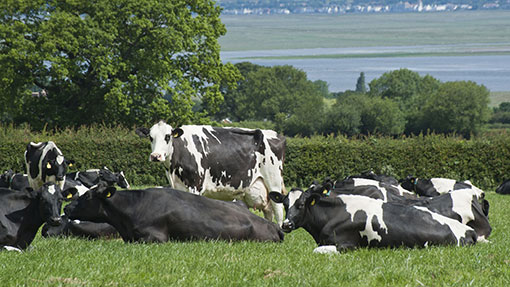Royal Welsh Show 2014: More than half of Welsh dairy farms set to expand

More than half of Wales’ dairy producers intend to increase milk production in the next five years, according to initial findings from a survey of the country’s farmers.
More than 943 (50%) Welsh dairy farmers responded to the to the survey – Your Voice Your Future, which was carried out by Promar on behalf of Coleg Sir Gar’s Dairy Development Centre.
Responses indicate that the country’s milk production will rise by 20% over the next five years, with 52% of producers likely to expand production. The vast majority of this increase in milk volume (85%) will come from larger herds (those with more than 200 cows).
See also: At a glance: World agriculture outlook 2014-23
Milk production in Wales is calculated to be about 1.5bn litres, but provisional figures for 2013-14 indicate the figure to be 1.67bn litres.
This proposed increase in milk supply is likely to boost demand for calving down heifers, as there appears to be insufficient youngstock reared in Wales to cover replacement needs.
Announcing the results of the survey at the Royal Welsh Show on Tuesday (22 July), Peter Rees from Coleg Sir Gar said the results were positive and suggested Welsh dairy farmers were investing in the future of milk production.
Farmers on aligned contracts showed more interest in increased production, according to the survey.
Meanwhile, TB was cited as the biggest constraint to expansion, irrespective of herd size, region or age.
Factors affecting expansion
Other factors limiting expansion included age and farm size.
The survey also found large herds were most likely to increase production, with 65% of farms having 200 or more cows stating they intend to grow.
Of the farmers questioned who said they were going to expand 73% of them were under 40. Surprisingly some 50% of farmers over 65 suggested they intended to increase production, which may possibly be due to family members coming back to the farm.
Conversely, the smallest herds are least likely to grow, and only 36% of farmers aged between 60-65 planned to increase production.
Concerns
Mr Rees said the survey did highlight “some concerns”, however.
The majority of respondents (73%) follow an all year calving policy, he explained, with 10% mainly autumn calving, 7% in spring and 10% implementing a mix of spring and autumn calving.
He added: “We have got to question why? Because the vast majority are on contracts that doesn’t benefit them doing that.”
Furthermore only 52% of farmers surveyed had succession plans in place – these tended to be young farmers and smaller herds.
Investment
Investment in dairying is expected to be largely on land, followed by feed equipment and buildings.
Mr Rees said the survey would give industry stakeholders a better idea of where support and research was needed.
He added: “In Wales we do have the ambition to succeed. With a little bit of government support we can make sure that happens.”
Renewable energy
On the question of renewable energy, a quarter of respondents have already invested in the technology with a further 14% planning to invest over the next five years.
The survey found less than 5% of dairy farmers intend to leave the industry over the next five years, with almost 80% of them having less than 99 cows.
In terms of future activity, 52% of respondents intend to increase milk production over the next five years, 38% expect to remain the same with 5% don’t knows and only 5% either decreasing or exiting the industry.
